When Tim Bell, General Manager at Lancaster House isn’t exploring local Lancashire walks and attractions on his doorstep, he also enjoys hoping across the boarder to Cumbria. Making the most of the fine weather, Tim heads up one of our most famous mountains…
With the heralding of summer, and the (theoretical) elimination of the risks of ice and snow in the Lakeland fells, for me this change of environmental conditions opens up the ability to tackle walks that one wouldn’t even contemplate undertaking in wintry conditions.

Views over Lake Ullswater from the lower slopes of Birkhouse Moor, en-route to Helvellyn
The Lake District Mountains contain many well documented challenging and higher risk routes, which should of course only be attempted taking into account ability, equipment and navigation, even in the warmer months. I have known freezing temperatures on the summits even in the month of July!
The name of one mountain in particular always comes to the forefront of my mind when the opportunity for a warm, clear and calm day presents itself – Helvellyn, England’s third highest mountain.
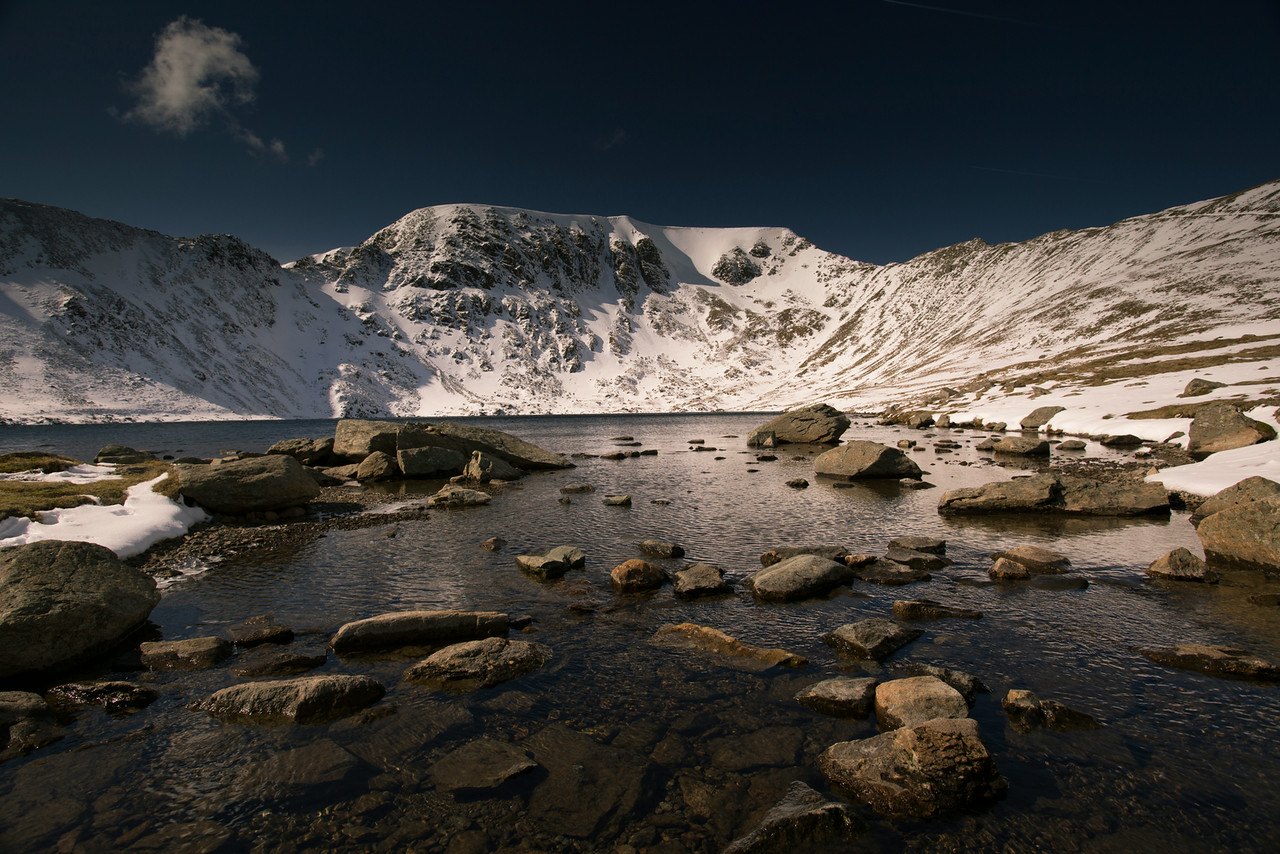
Helvellyn, although beautiful covered in snow the mountain too dangerous to tackle with winter conditions
With a distinctly unique shape and geology, displaying all the classic hallmarks of a glacial corrie, complete with picture-perfect Arêtes, the 3117ft peak has always been one of the Lake District’s biggest draws, and sadly, also one of the region’s biggest “black spots” in terms of accidents and fatalities. Hence my personal insistence that Helvellyn, via her famous “Edges” should only ever be tackled when conditions are nigh on perfect.
There are several well-documented routes to the summit, all of which Wainwright beautifully describes in his pictorial guide, and the ascent from the west, via Wythburn/Thirlmere is indeed a favourite winter walk for me. However, the eastern face, with its dramatic geography is by far the most enticing in the summer, and the opportunity to walk along the equally famous Arêtes, “Swirral Edge” and “Striding Edge” is too good to dismiss when mother nature shows her kinder side. I must point out at this stage though that this walk is classified as “Hard/Very Hard” so please don’t contemplate this walk unless you’re suitably fit and have plenty of experience of fell-walking.
Helvellyn via Striding Edge and Swirral Edge
Starting from the Tourist Information Centre at Glenridding, the ascent of Helvellyn from here is well beaten, and follows a rising path alongside Mire Beck until you reach Birkhouse Moor. Here, the views across the Lake are already dramatic, but for me, that initial glimpse of the magnificent “Horseshoe” as you first catch sight of the summit and the edges is one of the highlights of the day.
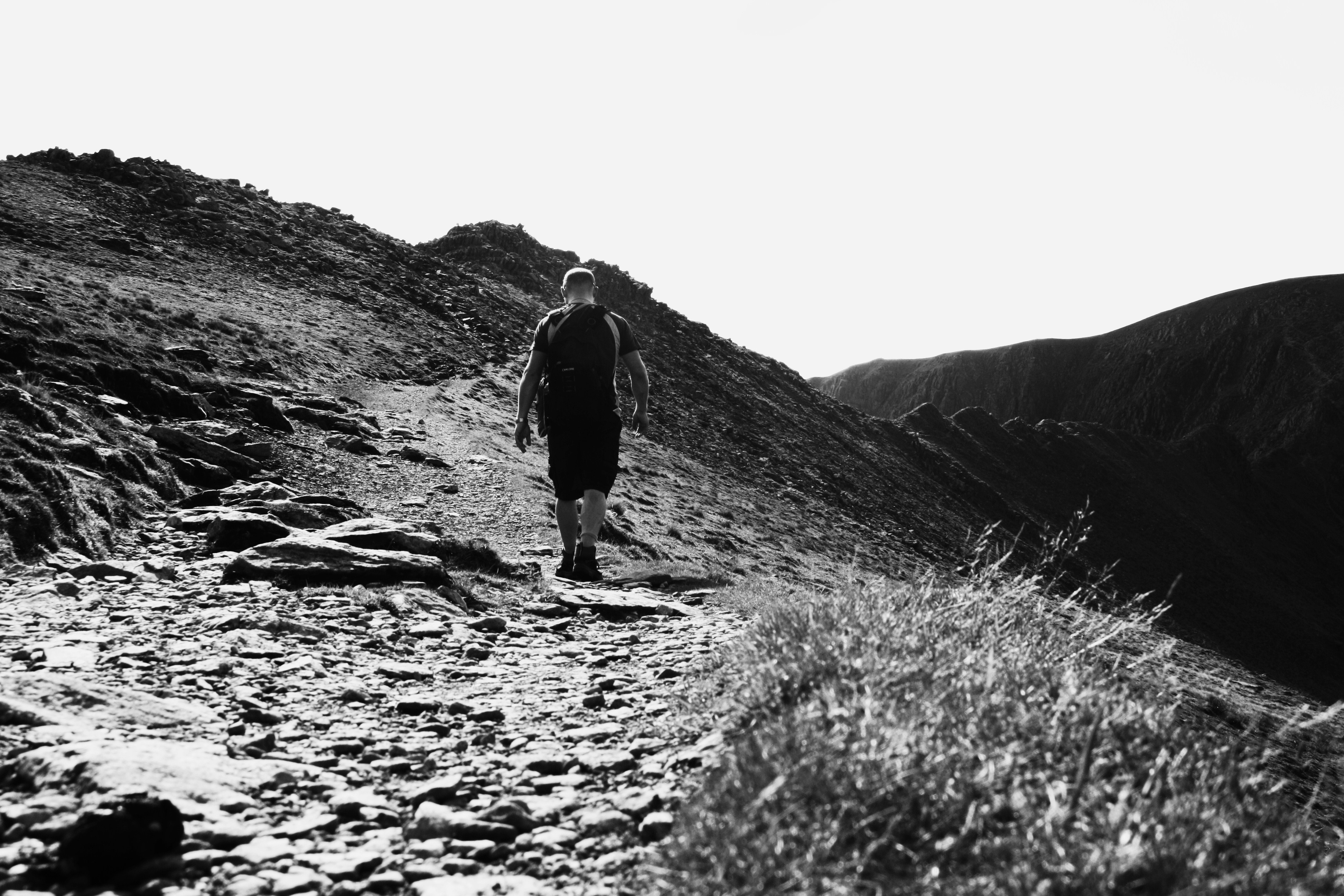
Approaching Striding Edge
As you approach the first Arête, the heart starts racing as the prospect of tackling Striding Edge draws ever closer. However, it is with a sense of calm and composure that one must traverse this notorious path. It’s knife-edge shape with drops hundreds of feet off either side means there is simply no margin for error. 100% concentration is required for this delicate and difficult stretch, and it goes without saying that should the conditions have deteriorated, it would be wise to head back now.
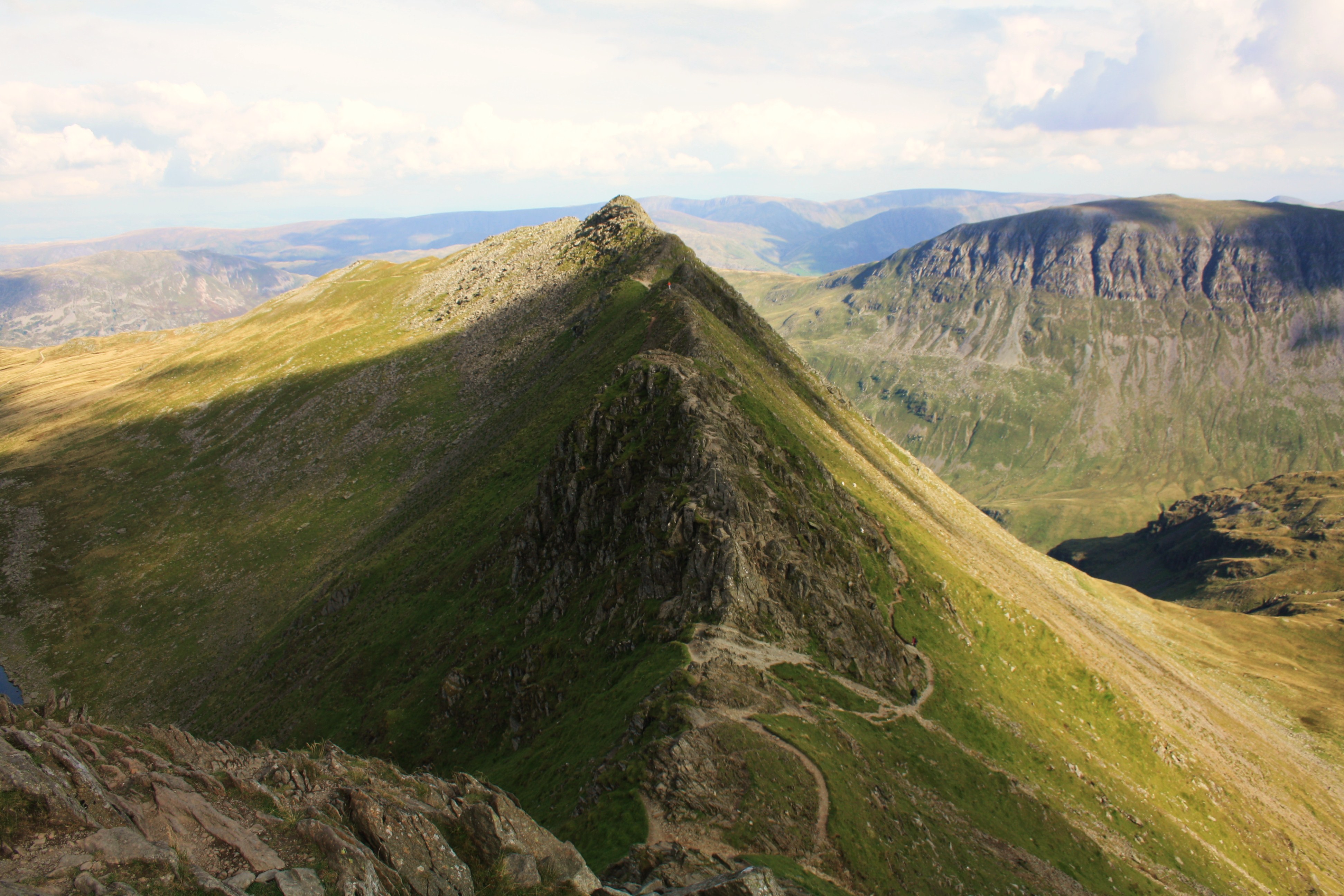
Striding Edge from the summit of Helvellyn
Once you’ve crossed the full length of the edge, it’s then a steep scramble to the summit of Helvellyn herself. Again, this needs to be taken slowly and with great care as much of the footing underneath is loose and slippy. However, the rewards of a successful climb is the safety of the wide summit plateau from where one can look back at Striding Edge in awe as you admire the sheer magnificence of this small, but famous stretch of mountain path.
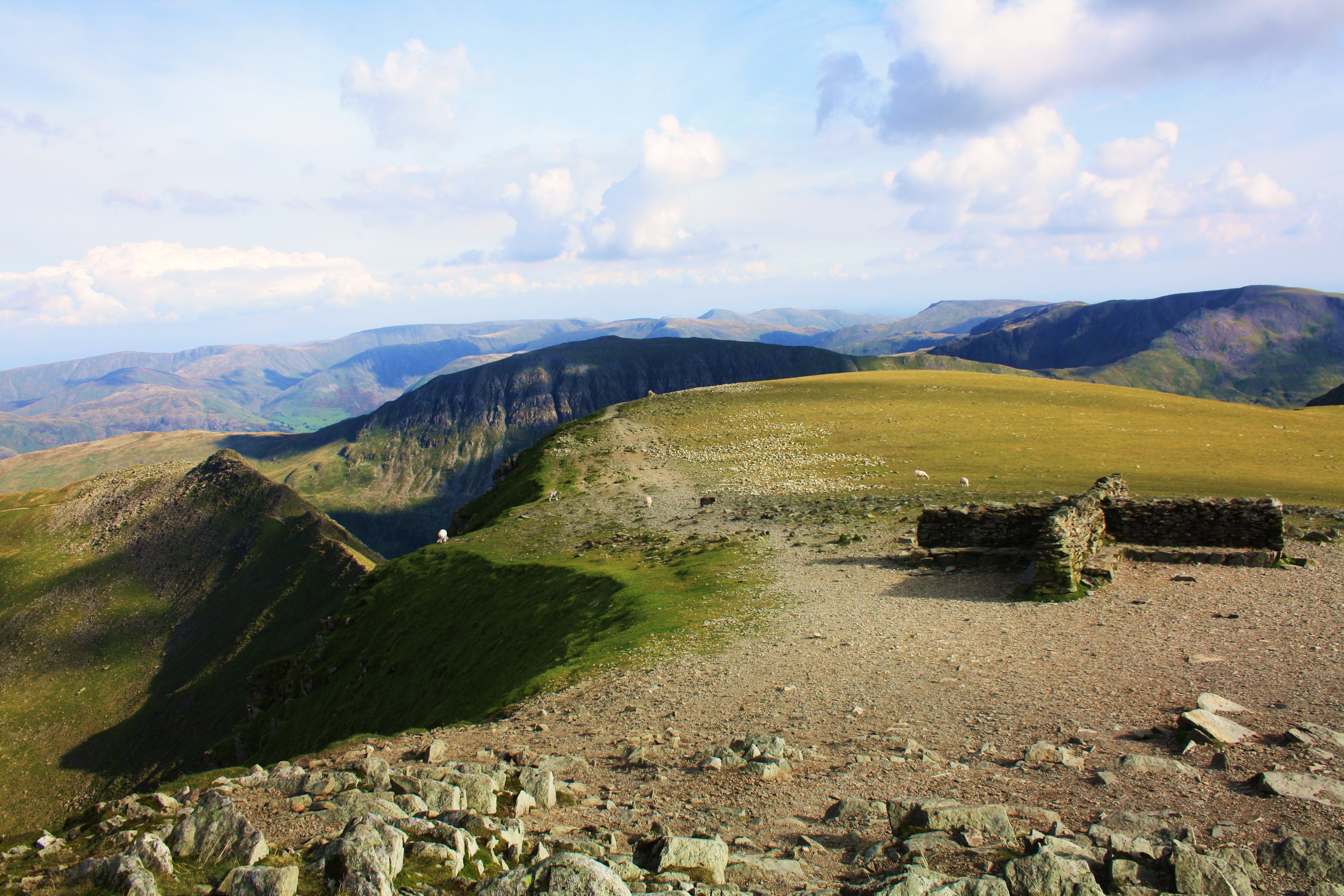
Helvellyn Summit Shelter with Striding Edge to the centre-left
At the summit, there is a cross-shaped summit shelter, a small cairn, and also a plaque commemorating the first British Mountain-Top landing of an aeroplane in 1926 by John F Leeming and Bert Hinkler. Incidentally, the erection of this plaque was made possible by Michael Berry, the founder of English Lakes Hotels. As always, the summit is a great place to recharge the batteries, rest the legs and enjoy a hearty packed lunch. The total walk is around 9.5 miles and involves 3250ft of total ascent, so the rucksack needs to be well stocked with plenty of food and drink to keep the energy levels going for the whole day.
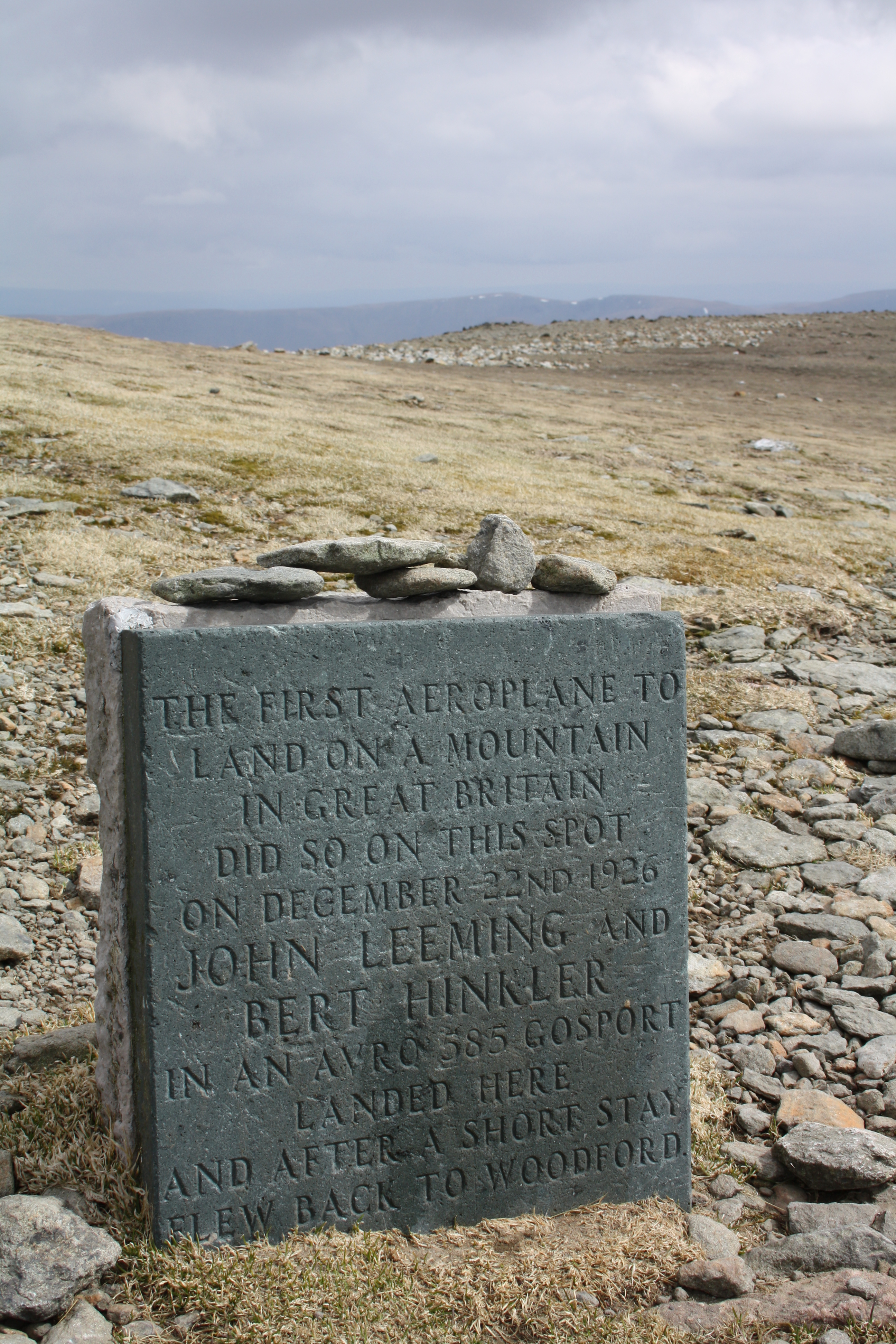
Plaque commemorating the first mountain top landing by an airplane (Organised by Michael Berry)
The descent is just as exciting (and potentially dangerous) as the climb up, as you head down to Helvellyn’s other Arête – Swirral Edge. Descents are often trickier than the climb, as gravity and tired legs become a factor in your footing. So again, patience is important as you traverse down another knife-edge path. Use your hands where necessary and you’ll soon be on the relative safety of a gradually flattening Col which gives you the option to take a short detour to the Pyramid-shaped summit of Catstye Cam, or down to the spectacular setting or Red Tarn. Here at the tarn, Helvellyn’s mighty North-easterly facing crags form a menacing and overwhelming backdrop to the calm waters, and again this is a good place to rest, have a quick refreshment, and take stock of the Horseshoe you’ve just completed.

Swirral Edge and Catstycam from Helvellyn Summit
The descent back to Glenridding following Red Tarn Beck is straight forward and allows you to soak up the memories of this classic Lakeland Walk. In all, you’re looking at about 5 hours for this whole trek, however I have been known to spend upwards of 8 hours on this mountain taking photo after photo of the incredible surrounding scenery which for me, and many a Lakeland fell walker, cannot be surpassed by any other mountain.
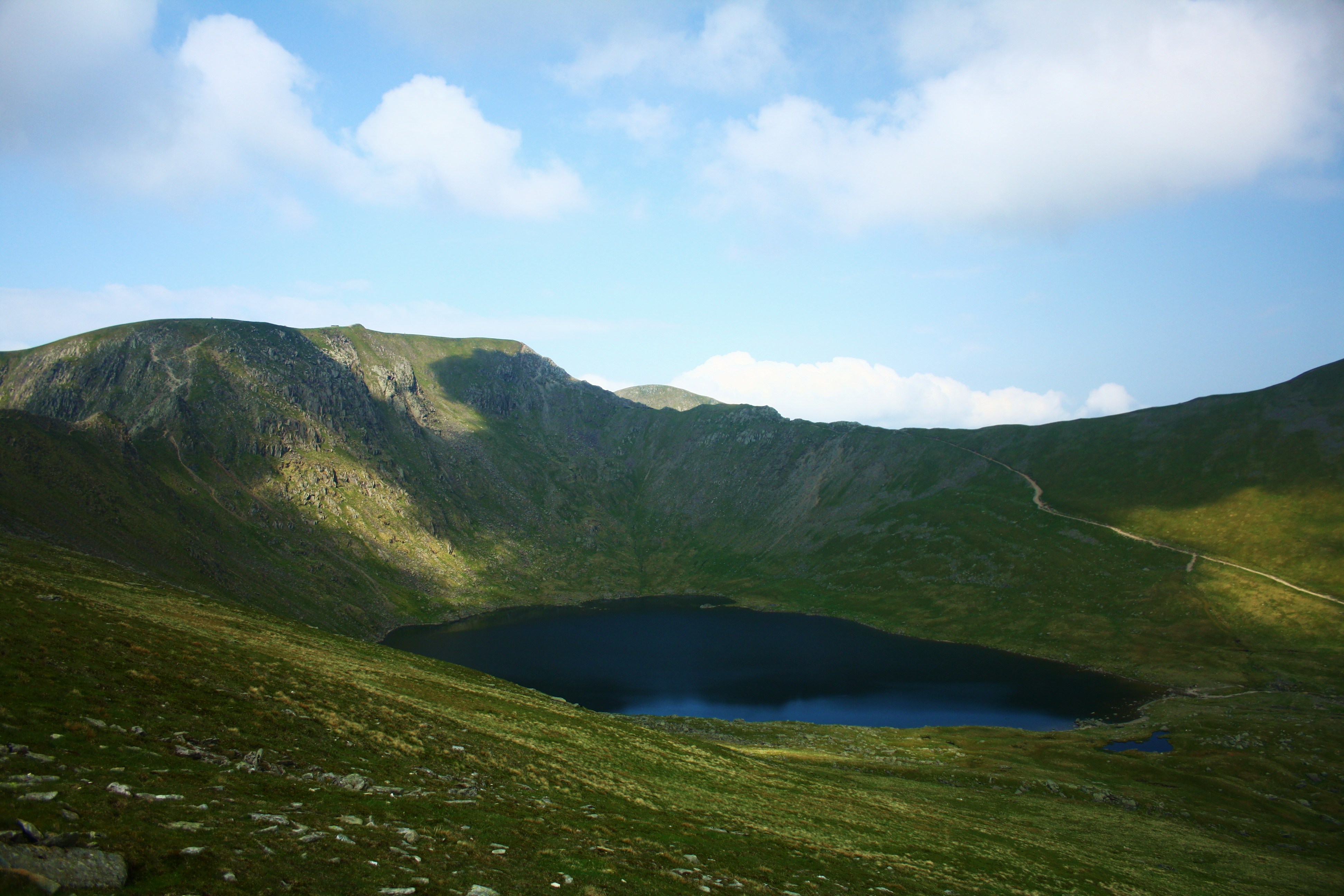
Red Tarn – a classic Glacial Corrie Tarn nestling in the shadows of Helvellyn Summit
As with any day out in the fells, please do go fully prepared. Make sure your equipment is up to the job in hand, you can navigate comfortably using a map and compass, and above all – Be careful!
- Written by: Tim Bell, General Manager, Lancaster House
